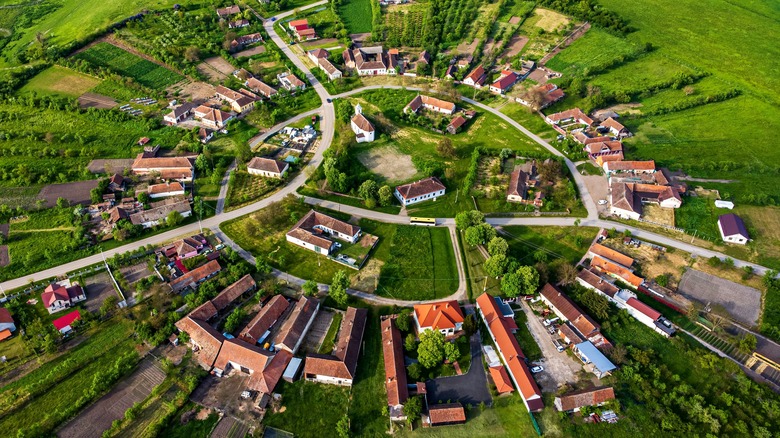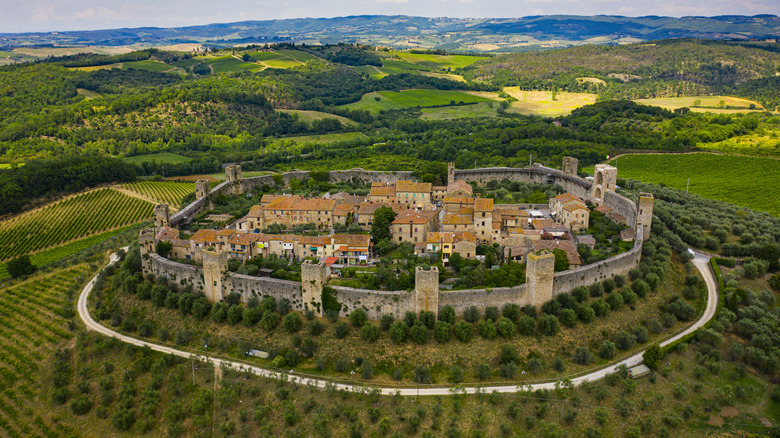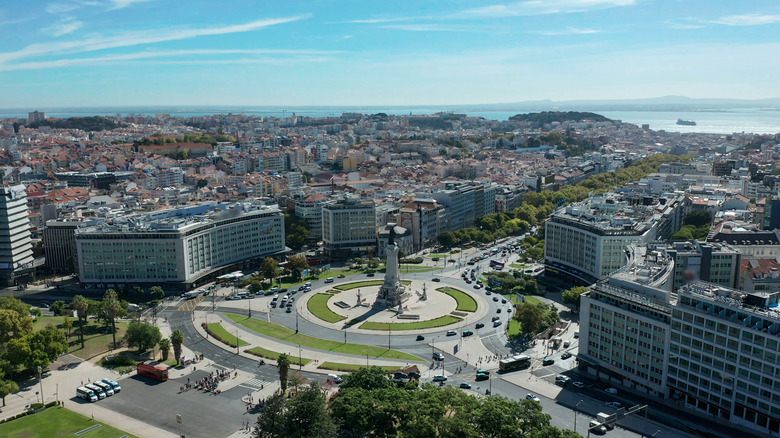Rick Steves Explains The Unexpected Significance Of Seeing A Circular Road In Europe
Sometimes, the layout of buildings and roads in a European city tells a vivid story about its past. According to Rick Steves, one such feature is the circular road, which you can see in cities like Munich, Germany. "Munich has a circular road," Steves says in an interview with King 5 Seattle, "and any European city that has a circular road, that was the medieval wall." Munich's wall was torn down in 1791, but the road that remains traces the wall's circular path around the original old city, which includes some of Munich's most important landmarks. The Frauenkirch, the famous church with the onion-domed towers, sits in the middle of the loop, and Munich's main square, Marienplatz, is a few steps away. Also located within that all-important circle is the famed beer hall, the Hofbräuhaus, a great place to experience what Steves considers the best beer scene in Europe.
So, what was the purpose of these medieval (and older) walls in Munich and other European towns and cities? Steves explains in his article, "Europe's Wall-to-Wall History," that the circular stone walls were constructed mainly to prevent invasions, which were a constant threat during the Middle Ages. While many cities eventually dismantled their walls to make room for growth, sections of old walls are still standing in places like Dubrovnik in Croatia and Carcassonne in France.
Must-visit European walled cities
Italy is another country with many walled cities. Remarkably, the massive wall in the quintessential Tuscan hill town of Monteriggioni — which impressed even Dante with its 14 turrets — is almost completely intact. To be transported back to the Middle Ages, head to this village, where you can wander through a medieval castle and stroll along walkways on top of the imposing walls, which look out over the vineyard-draped countryside. In July, the town hosts one of the oldest medieval festivals in Italy, the Monteriggioni di torri si corona, which features historic reenactments with authentic costumes along with music and culinary treats from days gone by.
In some Italian towns, the walls are considerably older than their medieval counterparts. The wall surrounding the lesser-known ancient hill town of Volterra dates back to Etruscan times, around AD 400 to 500. A testament to the skills of ancient builders, about 1.5 miles of Volterra's wall and gates are surviving today. Other places in Italy where you can see fascinating remnants of old walls are Lucca and San Gimignano (Tuscany), Perugia (Umbria), and Verona (Veneto). Bologna in Emilia Romagna had not one but three different loops of walls that were erected at different points in the city's history. A beautiful circular road now follows the path of the outermost wall (known as the Circla) around the city. Parts of the two newer walls are still standing, while pieces of the oldest wall are preserved in the Bologna Medieval Civic Museum.
Europe's other kind of circular roads
Not all circular roads in Europe signify the presence of a medieval wall — there's another type. This second species of looped roads, known as roundabouts, can be annoying if you don't know what you're doing, Steves notes in his article: "Behind the European Wheel: Driving Tips and Road Rules." Roundabouts are circular intersections with continuously flowing traffic that often have multiple entry and exit points. While roundabouts are found on many continents, they are quite prevalent in Europe, with France having more than any other country in the world, followed by Portugal, the U.K., and Italy, according to a 2023 study by Discover Cars.
To sail through those European roundabouts, here are a few tips courtesy of Rick Steves. First, look for the signs before the roundabouts that indicate which exit to take to reach your destination. Second, know that cars already in a roundabout have the right of way, so if you are waiting to enter, you have to yield to those cars. Finally, if you are unsure about your exit, use what Steves calls in his article a "360-degree case-out-your-options exploratory circuit." This means feel free to circumnavigate the roundabout a few times until you're sure about which exit you should take. Good luck! For more helpful driving tips, check out our guide on how to choose the right rental car for your European vacation.


